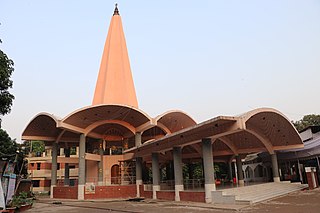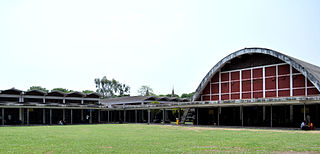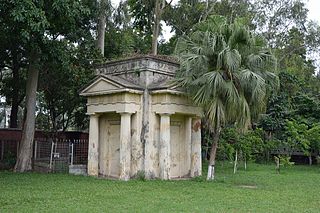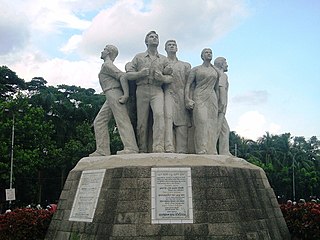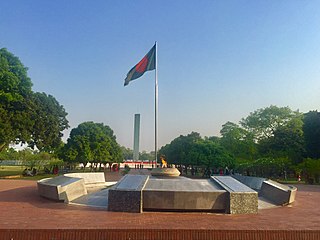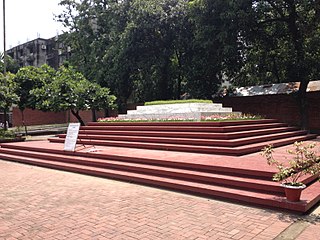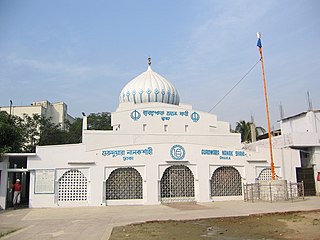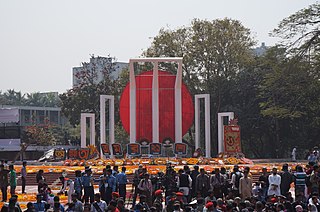Self-guided Sightseeing Tour #3 in Dhaka, Bangladesh
Legend
Guided Free Walking Tours
Book free guided walking tours in Dhaka.
Guided Sightseeing Tours
Book guided sightseeing tours and activities in Dhaka.
Tour Facts
5.1 km
40 m
Experience Dhaka in Bangladesh in a whole new way with our free self-guided sightseeing tour. This site not only offers you practical information and insider tips, but also a rich variety of activities and sights you shouldn't miss. Whether you love art and culture, want to explore historical sites or simply want to experience the vibrant atmosphere of a lively city - you'll find everything you need for your personal adventure here.
Individual Sights in DhakaSight 1: Ramna Kali Mandir
The Ramna Kali Mandir is a temple in Dhaka that was originally built in the time of the Mughal Empire. It was also known as the "Ramna Kalibari". The temple is dedicated to the Hindu Goddess Kali.
Sight 2: Moder Gorob
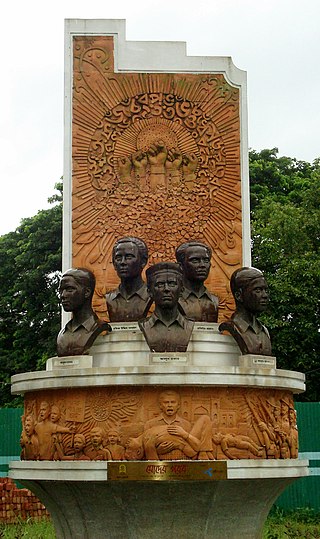
Moder Gorob or Our Pride is a sculpture situated in front of Bangla Academy building in Dhaka, Bangladesh. It was dedicated to the memory of those killed during the Bengali Language Movement demonstrations of 1952, when protesters demanding Bengali as a state language of former Dominion of Pakistan were massacred by Pakistan Police.
Sight 3: Burdhwan House
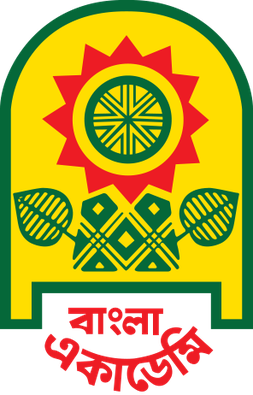
The Bangla Academy is the official regulatory body of the Bengali language in Bangladesh. It is an autonomous institution funded by the Government of Bangladesh that fosters the Bengali language, literature and culture, works to develop and implement national language policy and conducts original research in Bengali. Established in 1955, it is located in the Burdwan House in Shahbagh, Dhaka, within the grounds of the University of Dhaka and Suhrawardy Udyan. The Bangla Academy hosts the annual Ekushey Book Fair.
Sight 4: World War Memorial
Teacher-Student Centre, also known as TSC of the University of Dhaka is a building on the Dhaka University campus in Shahbagh, Dhaka, Bangladesh. The centre was established in 1961 by the Dhaka University by the Division of Public Affairs.
Wikipedia: Teacher-Student Centre (TSC), University of Dhaka (EN)
Sight 5: Greek Memorial
Greeks were the last among European merchants to come to Bangladesh. They came to Bangladesh around the 18th century. They constructed a memorial in Dhaka. It was constructed for the memory of the Greek merchants who died while in Dhaka. The Greek memorial was built around AD 1900, and appears like an ancient Greek temple; it is a small yellow structure on land owned by the Greek Community, which flourished in Dhaka in the 19th century. It is inside the Teacher-Student Centre (TSC) of the University of Dhaka and stands alone on the main Shahbagh Avenue and faces Ramna Race Course. To its southern side is the Atomic Research Centre and to its north a student's centre. It is considered to be the only such structure extant outside Greece.
Sight 6: Anti Terrorism Raju Memorial Sculpture
Anti Terrorism Raju Memorial Sculpture is a sculpture located in University of Dhaka campus of Bangladesh. It was created by Shaymol Chowdhury and considered one of the best sculptures in Bangladesh. It is dedicated to the memory of a student of Dhaka University named Moin Hossain Raju an activist of Bangladesh Students' Union who was killed while protesting against Terrorism. It was built in the late 1990s.
Sight 7: Suhrawardy Udyan
Suhrawardy Udyan is a national memorial and public space located in Dhaka, Bangladesh. Originally known as Ramna Race Course, it holds significant historical importance due to its association with key events in the country's history.
Sight 8: Ramna Park
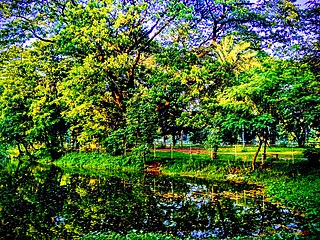
Ramna Park is a significant urban green space renowned for its historical significance and recreational amenities, situated at the centre of Dhaka, Bangladesh. Described the "lungs of Dhaka City," the 68.50-acre (277,200 m2) park was built during the British colonial era with a lake at its core, undergoing several transformations over the years and evolving into a popular public space. Additionally, Ramna Park hosts cultural events and festivals, notably, the yearly Bengali New Year celebrations, further enriching its role as a communal space for relaxation and social gatherings.
Sight 9: Tomb of National Poet Kazi Nazrul Islam
Mausoleum of Kazi Nazrul Islam is a mausoleum in Dhaka, Bangladesh. It marks the grave of the 20th century writer, poet and musician Kazi Nazrul Islam, Bangladesh’s national poet. He died 29 August 1976.
Sight 10: Guru Duara Nanakshahi
Gurdwara Nanak Shahi is the principal Sikh Gurdwara in Dhaka, Bangladesh. It is located at the campus of the University of Dhaka and considered to be the biggest of the 9 to 10 Gurdwaras in the country. The Gurudwara commemorates the visit of Guru Nanak (1506–1507). It is said to have been built in 1830. The present building of the Gurdwara was renovated in 1988–1989. The parkarma verandah had been constructed on all four sides of the original building to provide protection.
Sight 11: স্বাধীনতা সংগ্রাম
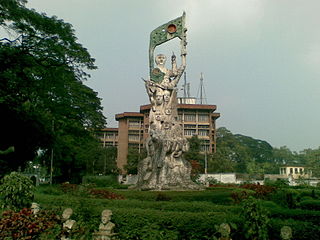
The Independence War Sculpture is the largest sculpture in Bangladesh containing the history of the glorious struggle of the Bengali nation. Shamim Sikder made this sculpture.
Sight 12: Central Shaheed Minar
The Shaheed Minar is a national monument in Dhaka, Bangladesh, established to commemorate those killed during the Bengali Language Movement demonstrations of 1952 in then East Pakistan.
Share
How likely are you to recommend us?
Disclaimer Please be aware of your surroundings and do not enter private property. We are not liable for any damages that occur during the tours.
GPX-Download For navigation apps and GPS devices you can download the tour as a GPX file.
